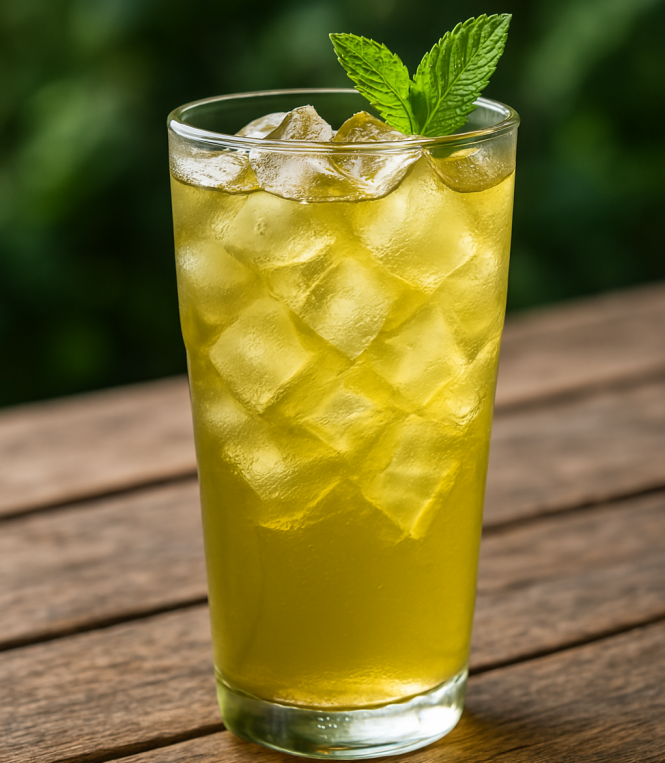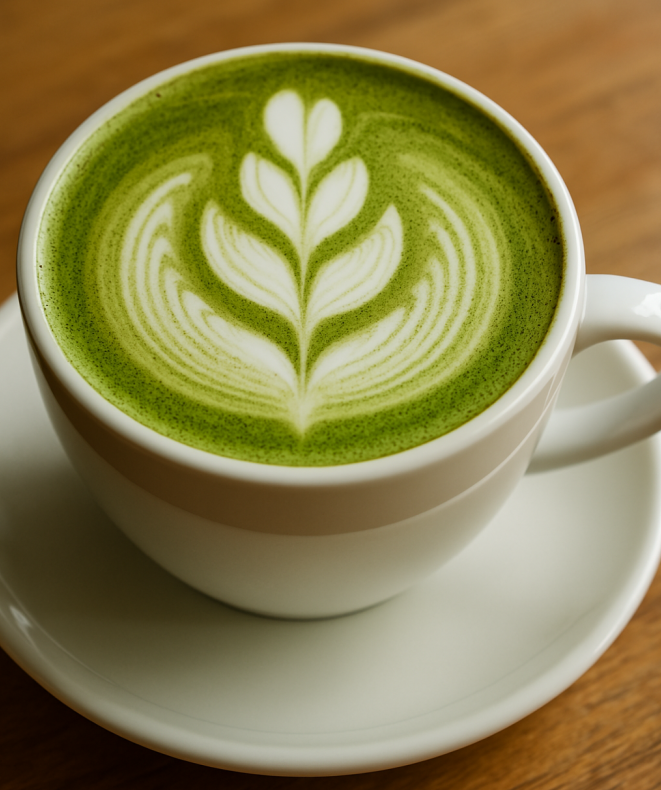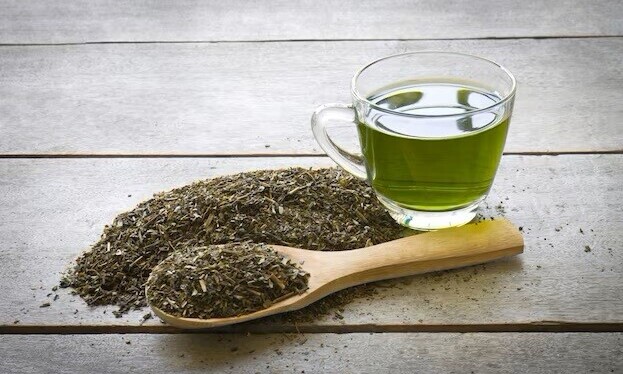
Green tea’s journey to the West is a fascinating tale of cultural exchange, adaptation, and innovation. In China and Japan, green tea has been a staple for thousands of years, deeply intertwined with art, ritual, and daily life.
But how did this ancient tradition cross continents and integrate into Western society? More importantly, how has the Western world reshaped and redefined green tea traditions over time?
From an exotic luxury good to a mainstream wellness beverage, green tea’s transformation in the West tells a story of shifting tastes, commercial influence, and the ongoing balance between tradition and modernity.
Let’s explore its historical arrival, adaptations, health perceptions, and what the future holds for this global favorite
Green Tea’s Introduction to the West
The arrival of green tea in Europe during the 16th century marked a transformation in Western drinking habits. Initially a luxury item enjoyed only by the wealthy, it symbolized the growing global trade networks of the era.
Ships laden with tea carried not just a new beverage but also elements of Asian culture, sparking intrigue and fascination among Westerners encountering these delicate, fragrant leaves for the first time.
Colonial Influence and Expansion
As European empires expanded, so did their love for this emerald brew. The British, Dutch, and Portuguese played key roles in introducing tea to new markets, with colonial plantations in India and Sri Lanka increasing accessibility.
However, this expansion came with ethical complexities, including the exploitation of local labor and resources—issues that still echo in today’s tea industry. Despite these challenges, green tea gradually became a staple in Western households.
Green Tea’s Cultural Integration in the West
Green tea’s impact extended beyond taste—it influenced traditions such as afternoon tea in England and evolved into American iced tea.
No longer just an imported novelty, green tea began acting as a cultural bridge, blending Eastern and Western lifestyles. Today, its presence is undeniable in cafes, restaurants, and homes worldwide.
A Fusion of Cultures: Adapting Green Tea to Western Tastes
Unlike in Asia, where green tea is traditionally brewed hot and enjoyed plain, the Western world adapted it to fit local palates, social customs, and fast-paced lifestyles. Some of the biggest transformations include:
- Iced Green Tea – A popular adaptation in the U.S., especially in warmer climates where sweetened iced teas dominate.
- Flavored Green Tea – Western brands introduced mint, citrus, and berry infusions, catering to those who prefer fruitier, refreshing twists.
- Matcha Lattes & Desserts – Matcha, once an exclusive Japanese ceremonial tea, found its way into mainstream coffee culture with matcha-flavored drinks, ice creams, and baked goods.

Green tea didn’t just maintain its traditional form after arriving in the West—it evolved to meet different tastes and lifestyles. Westerners took this ancient brew and gave it a cultural remix, adding flavors, making it more convenient, and turning it into an everyday indulgence.
The Rise of Matcha in the West
While loose-leaf green tea has been available in the West for centuries, matcha saw a huge explosion in popularity in the 21st century, thanks to social media, wellness influencers, and major coffee chains like Starbucks.
Originally part of traditional Japanese tea ceremonies, matcha has now evolved into a modern lifestyle beverage, appearing in:
- Lattes & Smoothies – A go-to drink for health-conscious consumers.
- Desserts & Baking – Matcha muffins, pancakes, and ice cream.
- Ready-to-Drink Products – Pre-bottled matcha drinks for convenience.
This evolution shows how green tea continues to adapt, blending authenticity with new-age trends!
Health, Wellness, and Green Tea: A Popular Trend in the West
Physical Health Benefits
Green tea has become a wellness staple in the West, embraced for its health benefits and natural properties. Rich in antioxidants, it is often linked to improved brain function, fat burning, and potential disease prevention. Some research suggests that its catechins may help reduce inflammation and support heart health.
Mental Well-Being and Mindfulness
Beyond physical health, green tea is increasingly recognized for its impact on mental well-being. In Asia, it symbolizes balance, wisdom, and hospitality. This perspective is gaining traction in the West, where green tea is often associated with relaxation and mindfulness. The presence of L-theanine, an amino acid known for promoting calmness and focus, has made green tea a favored choice among those seeking mental clarity and stress relief. Wellness practitioners and meditation enthusiasts frequently incorporate green tea into their routines, reinforcing its role as more than just a beverage.
Separating Hype from Reality
While many of these benefits are supported by science, not all claims hold up under scrutiny. Consumer enthusiasm sometimes outpaces research, leading to exaggerated perceptions. Green tea is a valuable addition to a healthy diet, but it’s not a cure-all.
Green Tea and Diet Culture
Diet culture has also contributed to green tea’s popularity, with many associating it with weight loss and detox routines. However, sustainable health comes from balanced nutrition and lifestyle choices rather than reliance on a single beverage.
From wellness influencers to holistic health experts, green tea remains a hot topic. While it offers many benefits, it’s best enjoyed as part of a broader approach to well-being.
Green Tea Brands and Market Trends in the West
As green tea gained traction, brands played a pivotal role in its popularity, influencing both market expansion and consumer preferences. The diversity of green tea products today reflects a balance between convenience, tradition, and innovation.
Popular Green Tea Brands
- Mainstream Brands: Companies like Twinings, Bigelow, and Lipton made green tea widely available at grocery stores, bringing affordable tea bags to everyday consumers.
- Specialty Brands: Teavana, Republic of Tea, and Mighty Leaf elevated green tea to a gourmet experience with high-quality loose-leaf varieties, organic offerings, and sophisticated packaging.
- Matcha Brands: MatchaBar, Encha, and Ippodo Tea Co. capitalized on the matcha trend, offering premium powdered green tea options with ceremonial-grade quality.

Convenience and Market Expansion
- Bottled Green Tea: With busy lifestyles in mind, brands like Arizona, Ito En, and Pure Leaf created pre-brewed green tea options, making it more accessible to a broader audience. These beverages often come in various flavors and formulations, from unsweetened to fruit-infused varieties.
- Subscription Services: Companies such as Sips by and Tea Drops cater to tea lovers by offering monthly curated selections, allowing consumers to explore new flavors and high-quality blends from around the world.
- Functional Green Tea Products: The growing popularity of functional beverages has led to a surge in green tea-based products, including energy drinks, immunity boosters, and wellness blends.
- Sustainable and Ethical Sourcing: Consumers are increasingly interested in ethically sourced tea, leading to greater demand for fair-trade, organic, and eco-friendly tea brands that prioritize sustainability in their farming and packaging methods.
The Future of Green Tea Traditions in the Western World
The journey of green tea in the West is far from over. In fact, it’s constantly evolving as cultures meld and tastes shift. Predictions for the next decade suggest that innovation will play a big role as companies look to capture new consumers and keep existing fans excited.
Key trends include:
- A Return to Traditional Brewing Methods – A renewed appreciation for authentic tea ceremonies.
- Innovative Green Tea Flavors – Expect turmeric, ginger, and adaptogenic herb blends.
- Eco-Friendly Packaging & Sustainable Brands – More companies are shifting toward zero-waste solutions.
The potential for green tea traditions to cross borders and become a part of global tea movements opens exciting doors. A future where green tea ceremonies are celebrated worldwide, alongside modern interpretations, is a thrilling.
It signifies a future where cultural sharing is at the heart of our global community.

Fun Facts About Green Tea in the West
Before we conclude, here are some fascinating facts about green tea’s journey and influence in Western culture!
1. Green Tea in America’s Founding Days (🇺🇸)
Before the Boston Tea Party (1773), green tea was more popular than black tea in the American colonies. The protest against British taxation targeted all tea, but green tea was widely consumed before black tea took over.
2. Iced Tea: A Happy Accident?
At the 1904 St. Louis World’s Fair, a heatwave led to the unexpected popularity of iced tea. A tea vendor, struggling to sell hot tea, poured it over ice—creating a refreshing twist that remains a Western favorite.
3. Green Tea Lattes Are Newer Than You Think
While matcha has been used in Japan for centuries, the now-famous matcha latte was popularized in the 1990s and 2000s, largely thanks to Western coffee chains like Starbucks.
4. A Symbol of Sophistication in Europe
In the 17th century, green tea was so expensive in Europe that it was locked away in special “tea caddies” with keys only accessible to the lady of the house or trusted servants.
5. Green Tea and Space Exploration
NASA has studied green tea’s antioxidants for their potential benefits in protecting astronauts from radiation exposure during space missions.
6. Superfood Status in the West
Green tea’s rise in the wellness industry exploded in the 2000s, with celebrities and health experts touting its benefits—fueling everything from detox teas to skincare products infused with matcha.
7. The Green Tea “Paradox” in France (🇫🇷)
France is known for its love of black tea, but its luxury tea houses like Mariage Frères have played a key role in introducing premium green tea blends to the Western world.
Conclusion: Embracing the Ever-Evolving Green Tea Culture
Green tea’s journey from an ancient Asian tradition to a Western staple underscores the power of cultural exchange, innovation, and the adaptability of global tastes.
Its presence in the West has grown from an exotic curiosity to a daily ritual, proving its enduring appeal across cultures and generations.
As green tea continues to evolve, it remains a symbol of both tradition and modern wellness, bridging the past with the future.
Whether you savor the meditative experience of a traditional tea ceremony, enjoy a refreshing iced green tea on a summer afternoon, or explore the latest matcha-infused innovations, you are participating in a centuries-old tradition that continues to shape contemporary lifestyles.
Join the Conversation
How do you enjoy your green tea? Do you stick to traditional brewing methods, or do you prefer modern adaptations?
Share your favorite brands, recipes, and experiences in the comments below.
